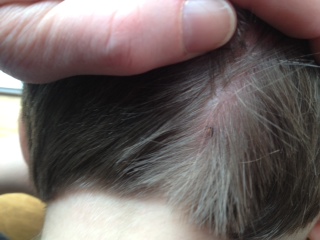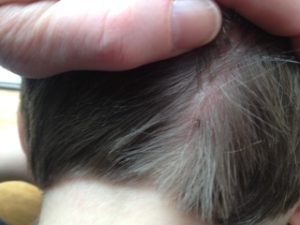Young kids and the elderly in New Hampshire are at greatest risk of a tick bite

In the United States, young kids and the elderly are at the greatest risk of developing Lyme disease, according to the Centers for Disease Control and Prevention (CDC). Now, a study examining emergency room (ED) admissions has found that in New Hampshire they are also at the greatest risk of getting a tick bite. [1]
by Daniel J. Cameron, MD MPH
More than 10,359 tick bite encounters were documented in 25 acute care hospitals in New Hampshire between 2010 and 2014. Twenty-five of the 26 acute care hospitals participated.

Children and the elderly were most likely to have been evaluated in the ED and are the most difficult to diagnose if they develop an atypical rash or another manifestation of Lyme disease.
The authors highlighted the need for both provider and patient education. “Results of ED data analyses can be used to target education, in particular for ED providers and the public through timely distribution of evidence-based educational materials and training programmes,” Daly says.
It would be reasonable to alert patients tthat a single 200 mg dose of doxycycline can prevent a rash but has not been proven to prevent other manifestations of Lyme disease or co-infections.
Related posts:
Neuropsychiatric presentations of Lyme disease in children and adolescents
References:
- Daly ER, Fredette C, Mathewson AA, Dufault K, Swenson DJ, Chan BP. Tick bite and Lyme disease-related emergency department encounters in New Hampshire, 2010-2014. Zoonoses Public Health. 2017.




Jennifer
04/28/2017 (12:06 pm)
I have Lyme disease and my daughter has been bitten by 3 ticks. Is there proof that the tick has to be latched on for 24 hours in order to pass the virus? I do not want my daughter to suffer through all that I have gone through and the primary care physician will not prescribe her an antibiotic until after the test comes back from the tick. Super frustrating!
Dr. Daniel Cameron
04/29/2017 (11:08 am)
The 24 to 36 hour rule is based in part on tick attachment studies from dogs. These studies support removing the tick ASAP. The studies under 24 hours leave some questions for future studies. There are also infections in a tick that are transmitted in less than a day. Stay tuned. Until then, your doctor will have to review the entire story.